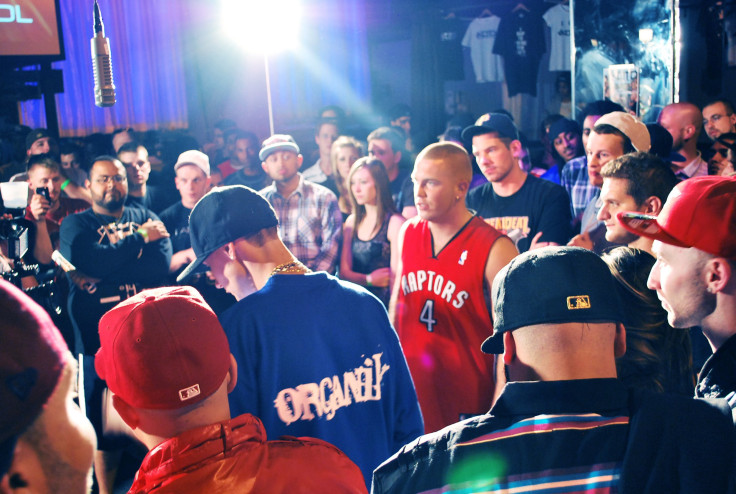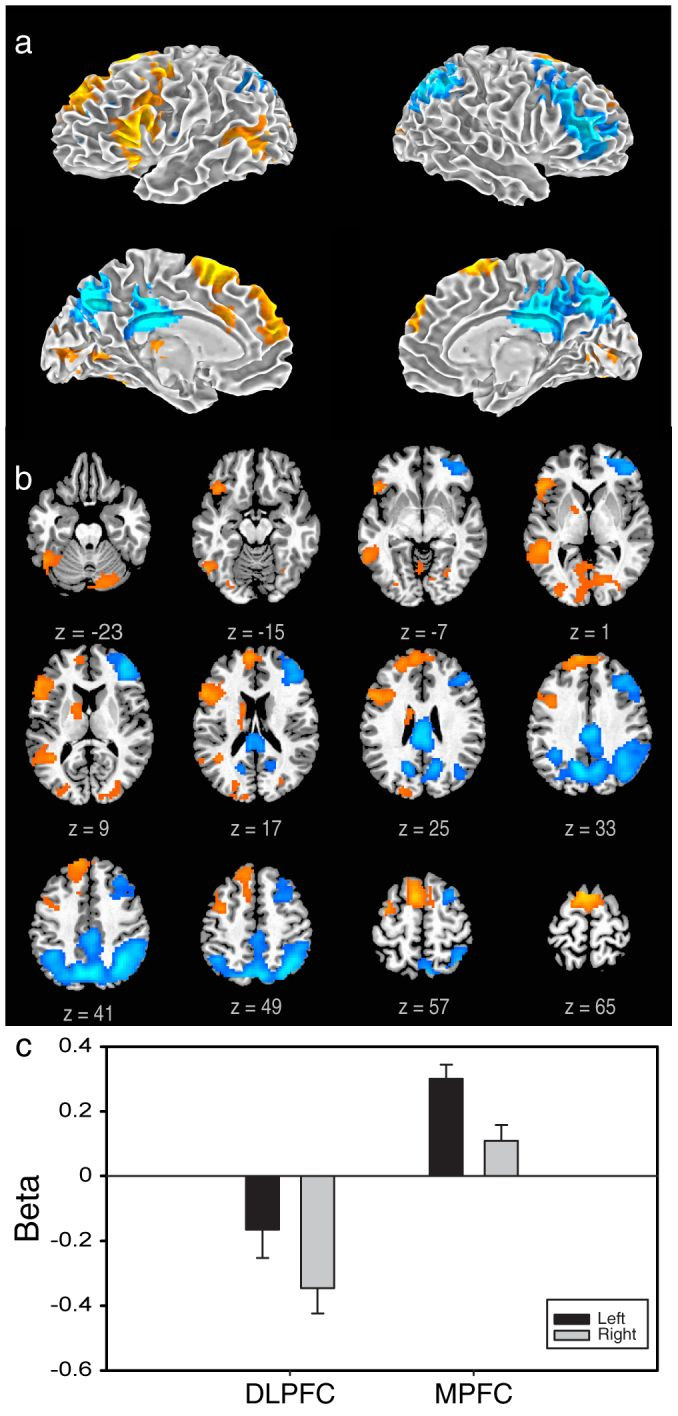The Neuroscience Of Freestyle Rap: How Creativity Pathways Give Us The Gift Of Improv

One day, not too long ago, Danny Orona was chilling in his Megazord strumming out a seventh chord. At least, that’s what came out in the heat of the moment, as his brain spit out rhyme after rhyme, verse after verse, mid-freestyle rap.
For Orona, that line was kind of anomalous. His initiation into music began with the guitar and eventually turned into a passion for producing beats and creating unwritten rap verses on the fly. But rarely do the two worlds intersect, he says. Somewhere in his brain he files away the worlds of chord progressions and rap into separate folders.
“I'm sure that being able to do both means I have some base level of musicality that's sorta extra that helps me with this sort of stuff,” he said. “But they're two different animals.”
The Science Behind Improv
Orona’s talents are only starting to make their way into science labs. With the help of fMRI, imaging technology that can measure blood flow levels in the brain, neuroscientists can apply rigorous research techniques to some of society’s most admired talents. They can form concrete, neural-specific definitions of creativity, whose clinical vagueness has long been conflated with ideas of love or genius. Finally, direct observation is starting to add a dash of specificity.
Ground was broken into the neuroscience of creativity in 2008, when Dr. Charles Limb and Dr. Allen Braun co-authored a study called Neural Substrates of Spontaneous Musical Performance: An fMRI Study of Jazz Improvisation. Limb, an assistant professor in the Johns Hopkins Department of Otolaryngology-Head and Neck Surgery and a self-proclaimed music addict, wanted to know how the best jazz improvisers in the world could reel off highly complex music without any preparation or practice. So, he hooked a miniature keyboard up to an fMRI scanner, put professional jazz musicians in that scanner, and looked at their brains as they played, both from memory and off the cuff.

The team was fascinated by what they saw. “Spontaneous improvisation was in each case associated with a highly congruous pattern of activations and deactivations in prefrontal cortex, sensorimotor, and limbic regions of the brain,” they wrote. “In addition, the majority of these regions showed functionally reciprocal patterns of activity. That is, activations during improvisation were matched by deactivations during the control tasks, and vice versa, when each condition was compared to the resting baseline.”
In other words, during rote performance, when the musicians weren’t improvising, the brain was relying on regions typically responsible for executive control. It shut down areas associated with free-thinking and language and sat back on what it had recently learned: in this case, one simple piece of music and one that was more complex. During improvisation, however, the roles switched. Executive control and self-monitoring shut down. The musicians started using more of their medial prefrontal cortex (MPFC), which is thought to govern self-expression. Without the hassle of self-analysis getting in the way, they could just feel the music and go.
But the research didn't end there. In 2012, Braun and a separate group of researchers turned their sights from jazz to rap. Would lyrical improvisation use different parts of the brain than musical improv? Through similar fMRI tests, they found strikingly similar patterns of brain activity compared to the work two years prior. The MPFC lit up like crazy and the area just behind it, the dorsolateral prefrontal cortex, deactivated.

The latest research takes it one step further. In 2014, Limb and his colleagues revisited the world of jazz to find out how interactive performance is reflected in the brain. They found even more evidence that music has a language all its own. The same brain regions involved in verbal communication lit up when musicians played off one another, in a style known as "trading fours," in which two musicians take turns playing four measures each. The technique requires active listening, and the brain activity showed "musical discourse engages language areas of the brain specialized for processing of syntax but in a manner that is not contingent upon semantic processing." Or, to put it another way, the language of music is clear and present, even if words aren't what we're hearing.
What Creativity Is
The performance of freestyle rap, like other forms of improvisation, may naturally lend itself to the very mechanisms Limb and Braun discovered. The best rhymes come from an abandonment of inhibition. As words stack into themes and get referenced back on one another, there simply isn’t any time to dwell. Orona says his success with freestyling comes from embracing those principles. “Once you let go of that fear, so many possible rhymes and words become unlocked.”
Creativity research seems to offer a lot of clues into the world of freestyling. Perhaps the most prominent is the concept of “flow.” Every artist has achieved flow in some capacity. If they haven’t, they’ve sought it out. Coined in 1997 as a way of thinking about high-skill, high-challenge tasks, flow describes intense concentration as it gets funneled through the execution of that task. In flow, distractions fade. Focus sharpens. Flow is what allows athletes to “get in the zone” and “get out of their heads.” They don’t think; they just do.
But flow isn’t everything in creativity. A raft of creativity research, across many domains, has found the same themes crop up. Rex Jung, a clinical neuropsychologist and assistant professor at the University of New Mexico, defines it as “the ability of the brain to use abductive reasoning, to solve adaptive problems in the environment, in novel and useful ways.” Ultimately, these pillars help create brand names, design products, engineer solutions, and, of course, create music.
Abductive reasoning, Jung explains, is a way of thinking about the world using abstraction, metaphors, and approximation. That’s one explanation for the heavy connection between drugs and art — they promote heightened pattern recognition. And freestyle rap, a discipline honed on street corners and in smoky basements, is no exception. For his part, Orona says both marijuana and alcohol help him think a little faster on his feet. The second he hits the end of a line, he says, he’s already 10 steps ahead thinking about the following rhyme. The technique comes from structure.
“[You’re] trying to grab that next word quickly so you can flesh out the in the middle part more easily and say something cooler,” he said.
The downside of relying on your MPFC during flow, however, is that sometimes your disinhibitions get the best of you. You make a mistake. “My most frequent mess-up happens when I get really into the internal rhyme, but forget to find that last rhyming word to then be able to finish the rhyme,” Orona said. “You have to improv some type of transition when that happens.”
Why Bother?
In 2010, Limb gave a TEDx talk on the findings he and Braun made in 2008. In it he raised an important question that comes up frequently when off-beat topics make their way into research journals: Why does science care about creativity? The question is fair. Typically, brain scans help illuminate problem areas, not regions that prove the person is having fun.
In that sense, there isn’t much direct clinical significance to fMRI studies of improvisers, but the upside is a little more forward-looking than that. The extent of our knowledge about neural interconnectivity is that it exists. Disparate regions of the brain appear to work together so the body can perform certain behaviors without hitch or hesitance. Past that, we know very little. Jazz improv and freestyle rap could be the ticket toward a fuller understanding of the brain, and, in the process, maybe make science just a little bit cooler.



























